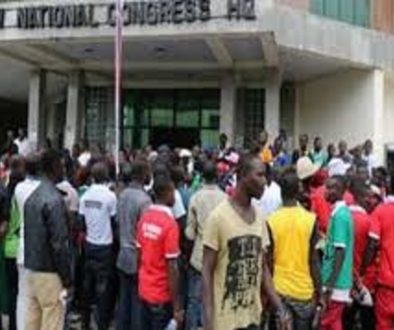The Role of Free Trade Zones in Actualising Continental Free Trade Area (CFTA) By Chris Okwy Ndibe
what each other produces and so using the continent as one single market may be
cheaper for the producers and buyers and at the end developing the overall
economy of the continent.
concept of Free Trade Zone is that it is an alternative policy framework,
developed by government, to promote policy objectives of government. Sometimes
this involves a specific geographical region, often involves specific industry
such as banking or insurance, or companies with some common behaviour such as
export oriented, high technology content.
Free Trade Zones of today are quite different from the Free Trade Zones of the
past. Although they serve a largely similar purpose, they have grown
increasingly complex and are thus involved with an increasing volume and
variety of economic transactions. Contrary to the view of the Trade Bureaucrats
and Liberal Trade economists, the liberalization of trade has not eliminated
the need for Free Zones, but rather expanded their roles. As globalization
takes place the formation of Free Zones continues at an increasing rate and
encourages export manufacturing.
Zones are being defined as “outside the customs territory” for the purposes of
the assessment of import duties and taxes. Free Zones typically allow for
duty-and tax-free imports of raw and intermediate materials and, in many cases
capital equipment. This is to lower the cost of production so as to enable the
product compete favourably at the international market.
attract Multi-National Corporations to investing in certain areas of production
especially in areas where a product has comparative advantages or built up
production capacity. Therefore linking the local specialised suppliers and
vendors of a particular industry with zone-based companies may create strong
and cost-effective local supply relationship, contributing to overall growth.
models of Free Trade Zones have relaxed stringent export – performance
requirements. Therefore could have the market within. Africa has a large market
and may override china and India by 2050.
nations in the form of import and export activities has been going on for
centuries and products from Free zones, produced at low cost has been exported
to neighbouring countries with lots of huddles, CFTA will open the way for both
sides of producers and buyers in countries. Also, zones specialising in
production and supply of location – specific and craft – specific goods, will
emerge to meet the demands of the products.
Free Zones in the continent
can produce an alternative to products imported from other continent. This in-turn
saves the purchasing currency and builds the host country and locality.
Meanwhile, the developed products can be perfected to be preferred than the
main product which with good marketing strategy, will penetrate other markets
once value is captured and customers are satisfied.
The evolution of Free Zone
brought along with optimising the business operations, improving the bottom
line, constantly seeking to enhance shareholder value, cost reduction, profit
maximization, technological advances as well as improved government policies
and easy access to finances (we shall elaborate on this in subsequent posts).
established scheme like Free Trade Zones will propel CFTA initiative faster.
There is no doubt that over 600 Free Zones in the continent will start taking
advantages of geographic proximity factor giving credence to that fact that
CFTA is a reality.
central to the actualization of CFTA initiative when we consider supply chain
efficiencies, cost consideration and easier access to the product and market.
Because of the free trade policy environment that Free Zone is known for. Free
Zones create space for the robust growth in global supply chain and global
production network as can be seen from the Asian Tigers and the BRICS. There is
no way Free Trade Zones
cannot play a vital role in the actualization of CFTA.






